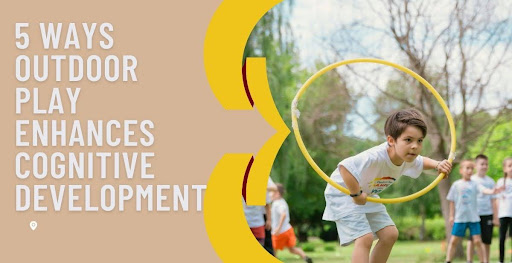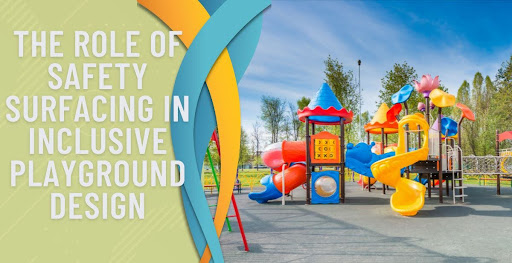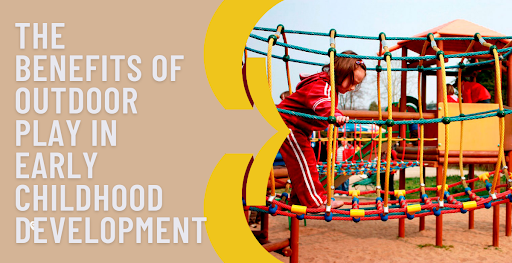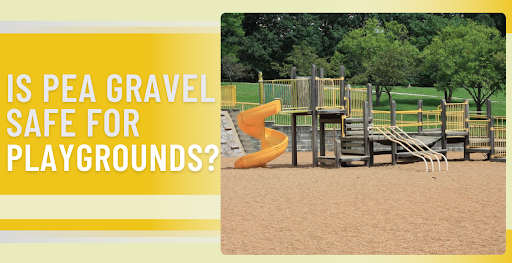How to Make Your Community Playground Design Stand Out
Design a standout community playground with inclusive play, creative features, and natural elements that everyone can enjoy together.

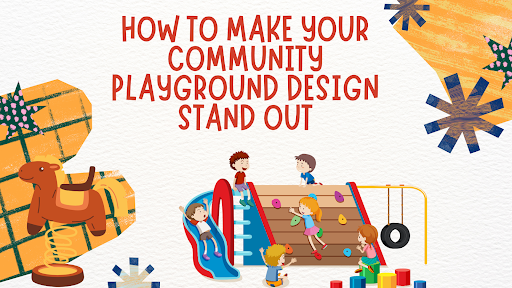
Community playgrounds offer more than just areas for play; they are vibrant hubs where children and families can come together to play and grow. To make a playground truly stand out, it requires more than just bright colors and fun equipment.
A thoughtful design that addresses the community's needs and encourages creativity and social interaction is essential.
The Importance of Community Playgrounds
Community playgrounds serve as crucial spaces for children's social, cognitive, and physical development. They also strengthen community bonds by bringing together people from different backgrounds to share the joy of play.
A standout playground design can significantly enhance these interactions and ensure the space is loved and used by the community for years to come.
Design Ideas for Community Playgrounds
When it comes to designing a playground that stands out, think outside the traditional sandbox. Explore playground design ideas that encourage creativity, inclusivity, and engagement for children of all abilities:
1. Inclusive Play Areas
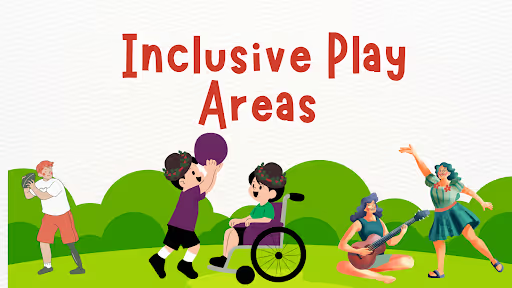
Alongside a variety of play styles, it's crucial to embrace not just accessible but truly inclusive playground design. The Americans with Disabilities Act (ADA) sets forth accessibility standards for public playgrounds, including ramps and special surfaces that enable children with mobility aids to access play equipment.
Inclusive playgrounds create environments where children of all abilities can use community park equipment together, offering universally engaging and challenging spaces that cater to everyone, including caregivers with disabilities and those with sensory challenges or spectrum disorders. When planning an inclusive playground, consider these diverse needs:
- Mobility: Conditions like cerebral palsy and muscular dystrophy can impact mobility; accessible playground design and features like wide ramps and suitable surfacing ensure all children can engage. Ground-level elements like talking tubes or bucket-and-pulley systems also allow those with limited mobility to participate in play.
- Sensory: Children with sensory disabilities, including vision impairments, hearing loss, or autism spectrum disorder (ASD), benefit from specific design features. These might include varied tactile surfaces for navigation and designated quiet areas to retreat from sensory overload.
- Ages: An inclusive playground should cater to varying developmental stages and abilities. Install features that allow different age groups to play together, like activity panels accessible to both toddlers and older children, promoting shared play experiences.
2. Incorporate Different Types of Play
Physical play is essential in any playground, so include ample space and structures for climbing, sliding, jumping, swinging, and other high-energy activities. Additionally, enrich the playground with diverse play styles such as:
- Creative: Foster creativity with features like musical instruments, drawing spaces, and themed structures.
- Sensory: Engage the senses with equipment like noisemakers, textured surfaces, balance toys, and activity panels.
- Imaginative: Provide flexible spaces that encourage imaginative play and allow children to interpret and invent.
- Reflective: Create quieter zones, such as gardens or enclosed spaces, where children can relax and reflect away from the playground's busier areas.
- Social: Design a playground areas that enhance social interaction, enabling children to play and cooperate together, fostering social skills across all ability levels.
- Natural: Integrate natural elements or nature-themed designs to connect children with the environment and teach them about nature.
By offering various types of play, your community playground will not only entertain but also help children develop a range of skills and form new connections. Ensure your play structures cater to these diverse needs.
3. Build With the Community Front and Center
A community-centered approach is key when creating a playground that serves as a gathering space and reflects the local spirit. Involving community members in the planning and building process not only lightens your workload but also ensures the playground truly represents the area's desires and character.
Leverage the diverse skills of community volunteers, such as a lawyer to handle legal matters and a writer to draft grant proposals. Local businesses can offer fundraising incentives while residents participate in the actual construction.
This collaborative approach helps manage logistics, secure funding, and incorporate community input into a modern playground design, ensuring it becomes a valued local asset.
- Grilling areas and fire rings
- Community gardens
- Dog parks
- Basketball hoops
- Bike racks
- Outdoor fitness equipment
- Shaded areas
This integration of community feedback ensures the playground not only meets functional needs but also resonates with the unique identity and pride of the local population.
4. Add Hidden Features to the Playground
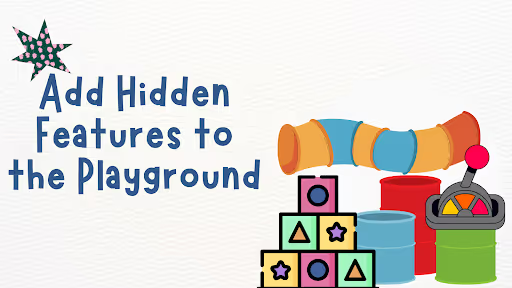
Children delight in discovering hidden features. Integrate surprises throughout the playground to engage their curiosity and encourage exploration.
Consider adding interactive and sensory elements such as:
- Peepholes
- Talk tubes
- Hidden pictures
- Beat blocks
- Crawl tunnels
- Small activity panels
- Varied textures
- Telescopes
- Buttons and levers
Strategically place these elements in the playground's nooks and crannies to create an intriguing environment. Collaborating with local artists can further enhance this experience by incorporating small, themed paintings or intricate details in murals, inviting visitors to embark on a treasure hunt as they play.
5. Leave Room for Creativity
Adults often overlook the imaginative potential that everyday objects hold for children. For instance, a simple stick might become a sword, a tower, or even a creature in the eyes of a child, while a tunnel may transform into a submarine's entrance or a log house in a forest.
To nurture this creative play, include versatile items in the playground, such as platforms and freestanding components. These features encourage children to interpret and modify their surroundings in innovative ways, fostering creativity and imaginative play.
6. Bring Nature into Play

Today, American children spend just four to seven minutes a day engaged in unstructured outdoor play. Creating a natural playground design can help reconnect them with nature, especially in urban areas where access to green spaces is limited.
Incorporating nature- and animal-themed elements can bring the outdoors closer, but working with the existing landscape is just as effective. A tree near a sandbox provides both shade and natural beauty, while gardens or planters introduce children to different plant life.
A well-planned nature playground design might also include a winding trail through gardens or wooded areas, offering a peaceful space for reflection. Sensory play features that mimic natural textures and sounds further enrich the experience, helping children develop a deeper appreciation for the environment.
7. Essential Amenities for Playground
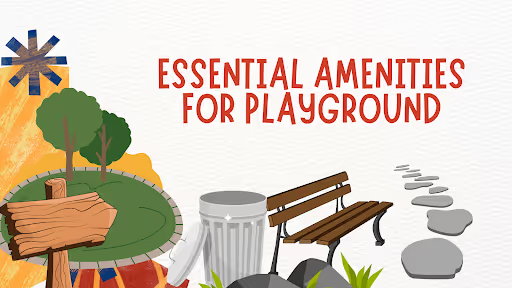
While it's thrilling to plan the dynamic structures and features of your playground, it's crucial not to overlook the basic amenities that enhance its usability and comfort. Essentials to include are:
- Benches
- Drinking water fountains
- Shaded areas
- Trash bins
- Adequate lighting
- Clear signage for rules and directions
For larger parks, especially those with special areas like dog parks, consider adding restrooms, waste pick-up stations, and drinking facilities for dogs to ensure a comprehensive and practical recreational space.
Considerations When Designing a Community Playground
Planning a playground that stands out requires attention to several important factors:
- Ensure all equipment and designs meet current safety standards to protect children as they play.
- Gather insights and preferences from the community. This can be achieved through surveys, community meetings, or interactive workshops.
- Choose materials and designs that are durable and sustainable to minimize environmental impact and ensure longevity.
- Balance your desires with a realistic budget. Fundraising, grants, and community partnerships can play a significant role in financing your project.
How Park N Play Can Help
Choosing the right partner is essential to transforming your playground vision into reality. Park N Play specializes in custom playground equipment design that meets the specific needs of each community.
With over 20 years of experience in design and installation, our products are tailored to bring your unique vision to life. You'll have access to our skilled in-house design team and the award-winning Landmark Design team from our partners at GameTime.
We create bespoke equipment and structures that ensure your playground is not only unique but also a valued asset to your community. With our track record of creativity and custom solutions, we are equipped to help bring your idea from concept to completion, making your playground a cherished part of the local landscape.
Finally
Creating a standout playground design is a rewarding challenge that can have a lasting impact on your community. By focusing on inclusivity, interaction, and the community's needs, you can design a space that not only looks great but also enriches the lives of all who use it.
Remember, the goal is to create a safe, engaging, and accessible space that will ignite joy and foster community for many years. Contact us now to make your community playground a reality


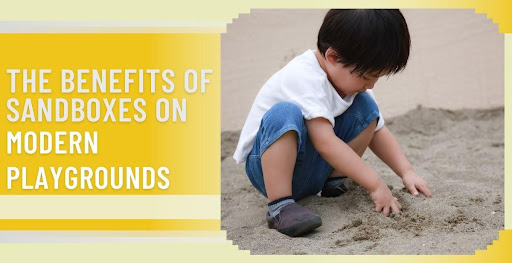
.jpeg)
.jpg)
.jpg)
.jpeg)
